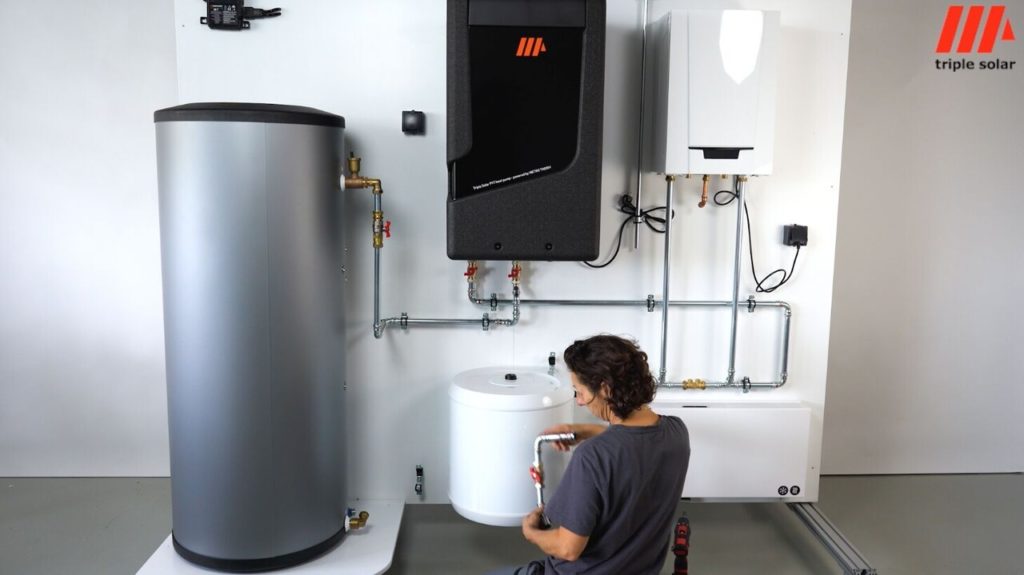What Is a PVT Heat System and How Does It Work?

Introduction
Imagine harnessing the power of the sun not just to generate electricity but also to heat your water. Welcome to the world of PVT heat systems! These innovative systems combine photovoltaic (PV) solar panels with thermal collectors, offering an efficient way to utilize solar energy for both electricity and heating needs. With a growing emphasis on sustainability and renewable energy sources, understanding how a PVT heat system works is essential for homeowners and businesses alike.
As concerns about fossil fuels rise, more people are exploring alternative options that promote efficiency while reducing their carbon footprint. If you’re curious about how these sophisticated systems function or considering investing in one for your property, you’re in the right place. Let’s dive deeper into what makes PVT heat systems so remarkable!
The Components of a PVT Heat System
A PVT heat system integrates photovoltaic (PV) and thermal (T) energy technologies. At its core, it consists of solar panels that capture sunlight.
The PV components convert solar energy into electricity. This process generates power for household or commercial use. Efficiently harnessing the sun’s rays is key to maximizing energy output.
On the thermal side, a fluid circulates through pipes embedded in the panel. This fluid absorbs heat generated by sunlight hitting the surface. It then transfers this warmth to heating systems or storage tanks.
Key elements also include an inverter that converts direct current (DC) from PV cells into alternating current (AC). Additionally, controls manage temperature and flow rates effectively.
A lithium battery can enhance efficiency by storing excess energy produced during peak sunlight hours for later use. Each component plays a vital role in optimizing overall performance and sustainability.
How Does a PVT Heat System Work?
A PVT heat system combines photovoltaic and thermal technologies for efficient energy utilization. It captures sunlight to generate electricity while simultaneously collecting heat.
The process begins with solar panels that absorb sunlight, converting it into electrical energy. This electricity can power appliances or charge a lithium battery for later use.
Beneath the solar cells, a network of pipes circulates a fluid—typically water or antifreeze—to collect excess heat produced during electricity generation. As the fluid heats up, it transfers this thermal energy to storage tanks or directly to heating systems.
This dual-action approach maximizes efficiency by harnessing both types of energy from the sun. Users benefit from reduced utility bills and increased sustainability without sacrificing comfort in their living spaces.
Advantages of Using a PVT Heat System
A PVT heat system offers a blend of solar energy and heating efficiency. By harnessing both photovoltaic and thermal technologies, it maximizes energy production from the sun.
One significant advantage is its space efficiency. Instead of installing separate panels for electricity and heating, a single PVT unit serves dual purposes. This can be particularly beneficial in urban settings where space is limited.
Additionally, these systems provide consistent performance even on cloudy days. The combination of electricity generation with supplemental thermal output ensures that users have reliable access to energy when they need it most.
Cost savings also come into play. A unified system reduces installation costs and simplifies maintenance over time compared to managing multiple systems separately.
Moreover, adopting a PVT heat system contributes positively to sustainability goals by reducing reliance on fossil fuels while supporting renewable energy initiatives.
Applications of PVT Heat Systems
PVT heat systems find diverse applications across various sectors. They are especially beneficial in residential settings, providing both electricity and heating for homes. This dual functionality helps reduce energy bills significantly.
In commercial buildings, PVT systems support the growing demand for sustainable energy solutions. Businesses can cut costs while enhancing their green credentials by utilizing these efficient systems.
Agricultural operations also leverage PVT technology to power irrigation systems or greenhouses. The integration of renewable energy supports food production with a lower environmental impact.
Moreover, industrial applications benefit from combined heat and power capabilities. Factories using PVT heat systems can optimize processes while minimizing reliance on fossil fuels.
Remote areas lacking grid access can utilize PVT technology effectively. These installations offer reliable energy sources where traditional infrastructure is unfeasible or too costly to implement.
Cost Considerations and Maintenance
When evaluating a PVT heat system, cost considerations play a crucial role. The initial investment can be significant due to the integrated nature of both photovoltaic and thermal technologies. However, long-term savings on energy bills often offset these upfront costs.
Maintenance is relatively straightforward but essential for optimal performance. Regular inspections ensure that solar panels are clean and functioning efficiently. Checking fluid levels in the heating components is also vital for preventing issues down the line.
Battery storage systems, especially lithium batteries, may add an additional expense. They require periodic monitoring and eventual replacement after several years of use.
By keeping up with routine maintenance tasks, you can extend the lifespan of your PVT heat system while maximizing its efficiency over time. This proactive approach pays off in energy savings and enhanced reliability.
FQAs
What are the main benefits of a PVT heat system?
A PVT heat system offers dual functionality, converting both solar energy into electricity and providing thermal energy. This efficiency makes it an attractive option for sustainable living.
How does it integrate with other systems?
PVT systems can seamlessly work alongside existing heating solutions, such as conventional boilers or electric heaters. They can complement various setups to enhance overall energy efficiency.
Is maintenance complicated?
Maintenance is relatively straightforward. Regular inspections and occasional cleaning ensure optimal performance. Most components have long lifespans, making them a reliable choice for homeowners.
Can I use a lithium battery with my PVT system?
Yes! Integrating a lithium battery allows you to store excess energy generated during sunny days. This stored power can be used later when sunlight isn’t available, maximizing your energy independence.
Conclusion
The PVT heat system represents a significant advancement in energy technology. By combining solar thermal and photovoltaic systems, it maximizes efficiency in converting sunlight into usable energy.
Its ability to generate both electricity and heat makes it particularly valuable for residential and commercial applications alike. As the world moves toward sustainable solutions, embracing innovations like this can lead to more efficient energy use.
Considering cost-effectiveness, maintenance needs, and various applications allows individuals and businesses to make informed decisions about adopting a PVT heat system. With continued advancements in technology—such as integration with lithium batteries—the future of energy utilization appears promising.
Embracing these cutting-edge systems will not only contribute to individual savings but also play a part in creating a more sustainable planet. The focus on renewable resources is imperative now more than ever, making the PVT heat system an option worth considering for those looking to invest in their energy future.



